Winners
2020:
The Yurii Simonov Memorial Prize for 2020 was awarded to Dr. Oleg Palamarciuc for his valuable contribution in synthesis, X-ray structure, and physicochemical studies of thiosemicarbazide based materials. His research interest is dedicated to the synthesis and study of coordination compounds of 3d elements based on thiosemicarbazide derivative ligands with various properties and applications such as single-molecule magnets SMM, active biologic materials, and sensor device for analytic determination. Dr. Oleg Palamarciuc has graduated from Moldova State University in 2007 and obtained his Ph.D. in Chemistry in 2012. His work was realized in collaboration with different prestigious centers: Centre de Recherche Paul Pascal, Bordeaux, France, Institute Physical and Chemistry Materials from Strasbourg, France, University of Vien, Austria. He was a principal investigator and executor in several international research projects such as ANR Blanc, H2020, AUF. Dr. Palamarciuc continues to work at Moldova State University as a Senior Researcher.

2019:
Yurii Simonov Memorial Prize for 2019 was awarded to Vasilii Graur for his contribution in design and synthesis of biologically active 3d metal coordination compounds with 4-allylchalcogensemicarbazones and their derivatives. The biological activity of such compounds strongly depends on the nature of different substituents in 4-allylthiosemicarbazide, alkylation of Sulphur atom, and it substitution by selenium one. Vasilii Graur skillfully used physic-chemical and single crystal X-ray diffraction analysis for understanding the structure–activity relationship in this group of compounds and finding new substances with selective activity against cancer cells and low toxicity. Vasilii Graur combines his research activity with teaching activities in Moldova State University in Chisinau and preparing students for international chemical Olympiads.

2018:
We are happy to announce that the winner 2018 Yurii Simonov Memorial prize is Dr. Maxim Guc. His work is devoted to the study and technological development of multicomponent chalcogenide semiconductors for advanced photovoltaic devices as those based in Cu2ZnSn(S,Se)4 kesterite compounds. These technologies have a strong interest because of their potential for the development of high efficiency solar cell devices with low fabrication costs. In contrast with other chalcogenide photovoltaic technologies that are at a much more mature technological state – as those based in CIGS (Cu(In,Ga)(S,Se)2) – kesterites are only formed by earth abundant elements, which make them specially well suited for the sustainable industrial scale up of their production to mass production levels. In this field, Dr Guc has made several relevant contributions allowing a significant advance in the knowledge of fundamental properties of these semiconductors, providing with clear experimental evidences allowing the identification of their main crystalline structure with the kesterite structure from the deep analysis of their vibrational properties. This has also been complemented with a detailed analysis of their transport properties. Knowledge of these fundamental properties is strongly relevant for the technological development of suitable processes for the synthesis of the absorbers in kesterite based devices.
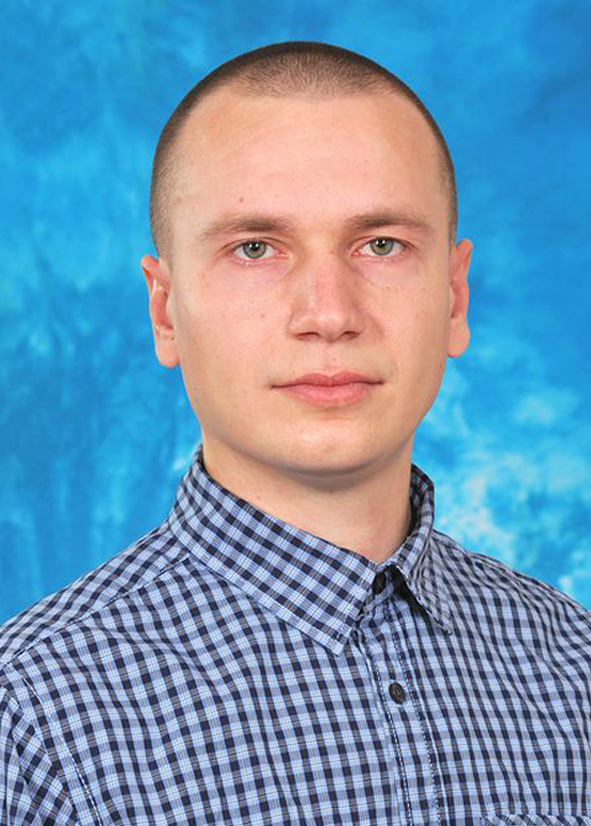
2017:
The Yurii Simonov Memorial Prize for 2017 was awarded Diana Chisca for her contribution in design, synthesis, and X-ray structural study of the Co(II) crystalline coordination polymers of different dimensionality with mixed ligands such as dicarboxylic acids and bis(pyridine) ligands of different rigidity, or nicotinamide-like ligands. Such materials revealed the reversible single-crystal-to-single-crystal transformations accompanied by changing of color under the solvent molecules release/uptake. The synthesis of new materials together with study of adsorption, magnetic, spectral, and mechanical properties represent a valuable step for development of smart materials based on coordination polymers. Diana Chisca has graduated from Tiraspol State University of Moldova in 2004 and currently is affiliated with Institute of Applied Physics, Moldova Academy of Science, where she is finishing her PhD thesis. The prize awarded for the work that is part of her PhD thesis. Diana Chisca combines her research activity with teaching activities in Moldova State University in Chisinau.
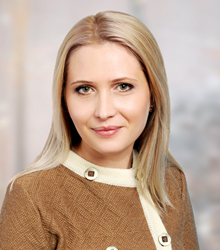
2016:
The Yurii Simonov Memorial Prize for 2016 was awarded Dr. Sergiu Shova for his valuable contribution in crystallographic structural X-ray study of crystalline materials built-up from discrete molecular and polymeric architectures based on 3d transition metals and flexible ligands containing silane and siloxane units. His research allowed to connect the structure of those materials with their physical properties. Doctor Serjiu Shova has graduated from State University of Moldova in 1980 and obtained PhD in Chemistry in 1985. Dr. Shova is well recognized researcher in chemistry and crystallography of coordination and supramolecular compounds. Sergiu Shova taught courses in inorganic chemistry, crystallography and X-ray crystal structure analysis. Dr. Shova is affiliated with State University of Moldova, The Institute for Applied Physics of Moldova Academy of Science, The Institute of Chemistry of Moldova Academy of Science, The Zoology Institute of Moldova Academy of Science, and “Petru Poni” Institute of Macromolecular Chemistry in Romania. He was involved as a principal investigator and executor in a number of international research projects. Dr. Shova has published about 200 scientific papers in prestigious refereed international journals.
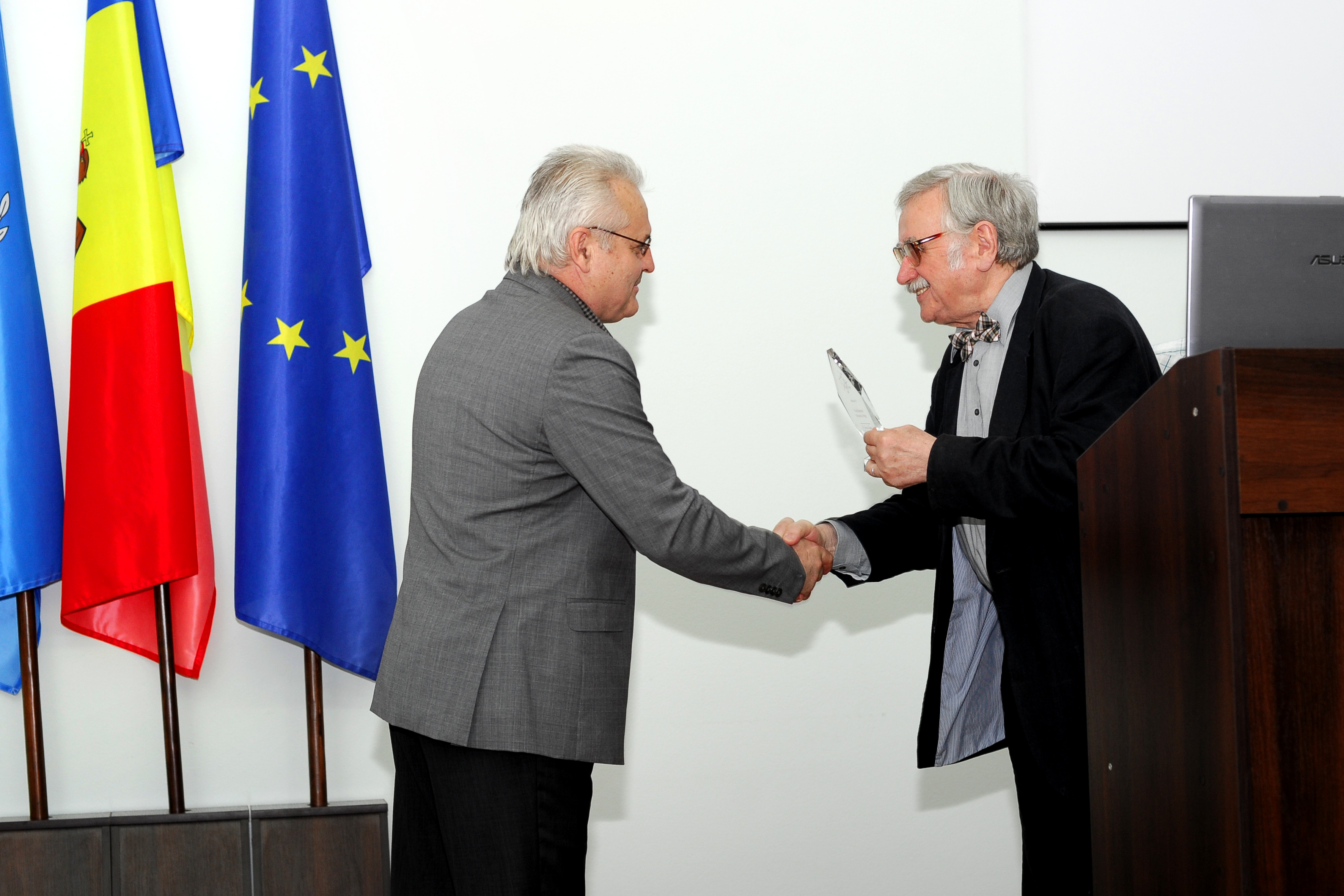
2015:
The
Yurii Simonov
Memorial Prize for 2015
was awarded to
Dr. Viorel Felea
for pioneering ultrasound spectroscopy investigations
of novel field-induced
structural transitions in complex magnetic materials performed
in high magnetic fields up to 65 T.
His work helps in elucidating
the role of the spin-lattice coupling and of the
mechanisms of the spin and orbital induced transformations in ternary
magnetic spinels perspective for spintronic applications.

2014:
The
Yurii Simonov
Memorial Prize 2014
for seasoned researchers was awarded to Dr.
hab. sci. Veaceslav Ursaki
(Institute of Electronic Engineering and Nanotechnologies, Academy of
Sciences of Moldova) for the series of publications under the general title “Order
disorder effects and pressure induced phase transitions in AIIBIII2XVI4
compounds”. This study generalizes the most
stable as-grown structures of AIIBIII2XVI4
compounds with S and Se as X, their high pressure phases, and their
structures upon decompression. It was shown that most of thioindates are
cubic spinels, selenoindates are of either tetragonal structures or
rhombohedral layered structures, while most of gallates and aluminates
crystallize in tetragonal structures (defect chalcopyrites or defect
stanites). New insights were brought
into the pressure induced disordering processes, and the scheme of
pressure induced phase transitions was revealed by means of Raman scattering
study, XRD experiments and optical measurements under hydrostatic pressure
in this class of compounds. Understanding of structure-property relationship
in these materials can have profound implications in many fields,
particularly in improving their optoelectronic applications.
2013:
 2013
Prize was awarded to Dr. Lilia Croitor (Institute of Applied Physics,
Academy of Sciences of Moldova) for series of publications under the title "
Molecular design and crystallographic studies of Cu(II), Zn(II) and Cd(II)
coordination compounds as the hosts for small molecules inclusion ". The
object of this study represents the controlled design and single crystal
X-ray analysis of the mixed ligand Cu(II), Zn(II) and Cd(II)
dioximates/dioximes as a new family of potentially porous materials with
useful properties. It has been demonstrated that the bulkiness of the
1,2-cyclohexanedionedioxime molecule along with the conformational
flexibility of its cyclohexyl ring provides an access to the loosely packed
compounds capable of accumulating guest molecules. Such host�guest systems
demonstrate luminescence response to the guest inclusion (in majority of
compounds � quenching of luminescence).
2013
Prize was awarded to Dr. Lilia Croitor (Institute of Applied Physics,
Academy of Sciences of Moldova) for series of publications under the title "
Molecular design and crystallographic studies of Cu(II), Zn(II) and Cd(II)
coordination compounds as the hosts for small molecules inclusion ". The
object of this study represents the controlled design and single crystal
X-ray analysis of the mixed ligand Cu(II), Zn(II) and Cd(II)
dioximates/dioximes as a new family of potentially porous materials with
useful properties. It has been demonstrated that the bulkiness of the
1,2-cyclohexanedionedioxime molecule along with the conformational
flexibility of its cyclohexyl ring provides an access to the loosely packed
compounds capable of accumulating guest molecules. Such host�guest systems
demonstrate luminescence response to the guest inclusion (in majority of
compounds � quenching of luminescence).
Our sincere congratulations to Dr. Croitor!
2012:
In May of 2012
Scientific Committee and the Board decided to award two prizes of $1000
each:
Prize for seasoned
researchers was awarded to Dr. Paulina Bourosh (
Prize for younger
researchers was awarded to Dr. Denis Prodius (Institute of Chemistry,
Academy of Sciences of Moldova)
for series of publications under the title �Synthesis and investigation of
polynuclear metal (s-, d- and f-) carboxylates as modern multifunctional
materials�. The application of Dr. Prodius was focused on coordination
clusters with unusual magnetic interactions and
biologically active compounds. The
single crystal X-ray method played a crucial role in his investigations for
the determination of molecular structures of novel compounds. Especially,
this has been pronouncedly shown in his works related with Single Molecule
Magnets, which are a special class of metal-organic clusters that possess
purely individual magnetic properties, with each molecule able to be
individually magnetized. A variety of different clusters were synthesized by
Denis Prodius as precursors for obtaining more than 50 new substances in
crystalline form and the crystal structure for 18 of them were analyzed.
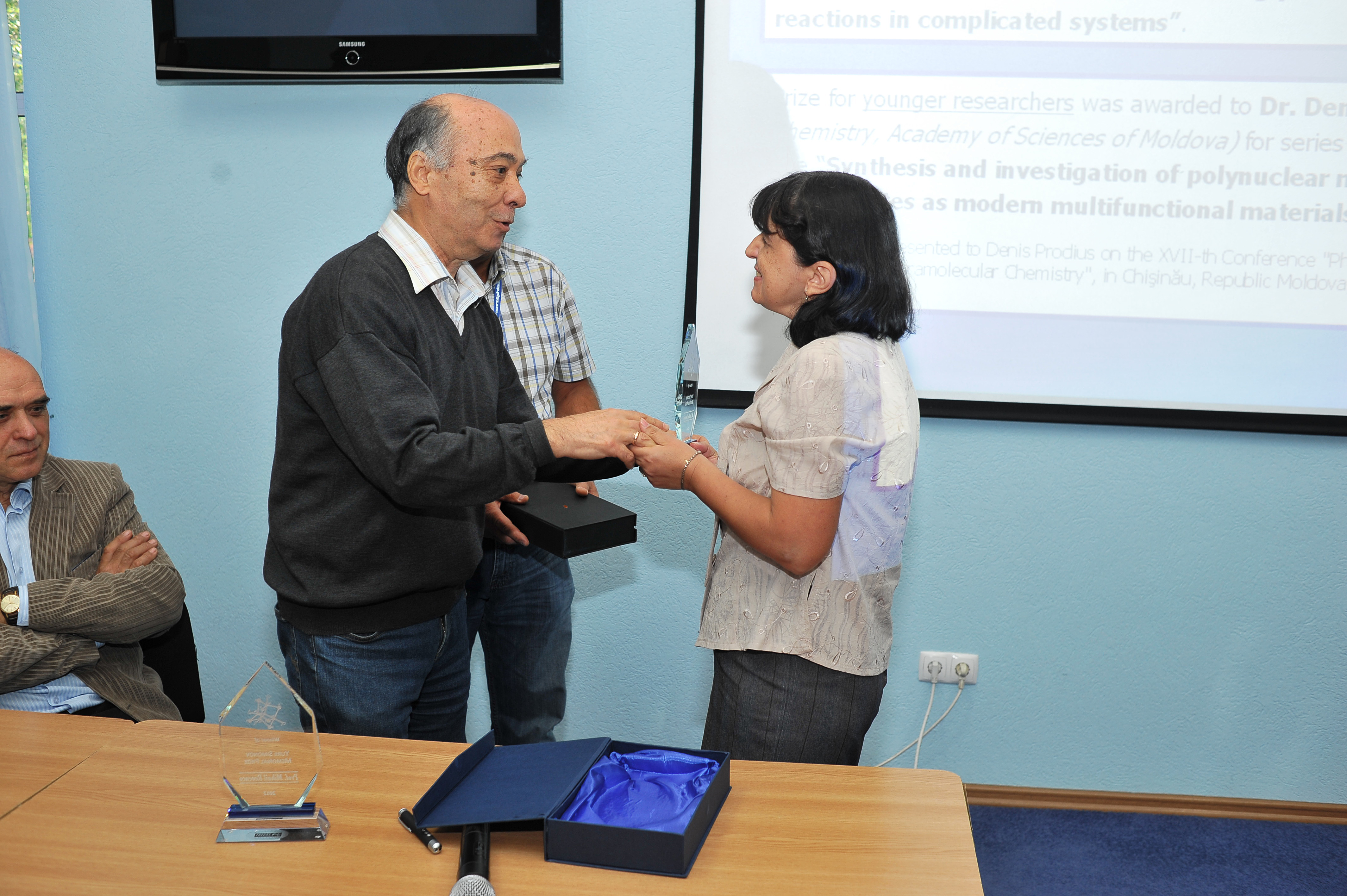 Dr. Bourosh receiving the 2012 Prize
Dr. Bourosh receiving the 2012 Prize
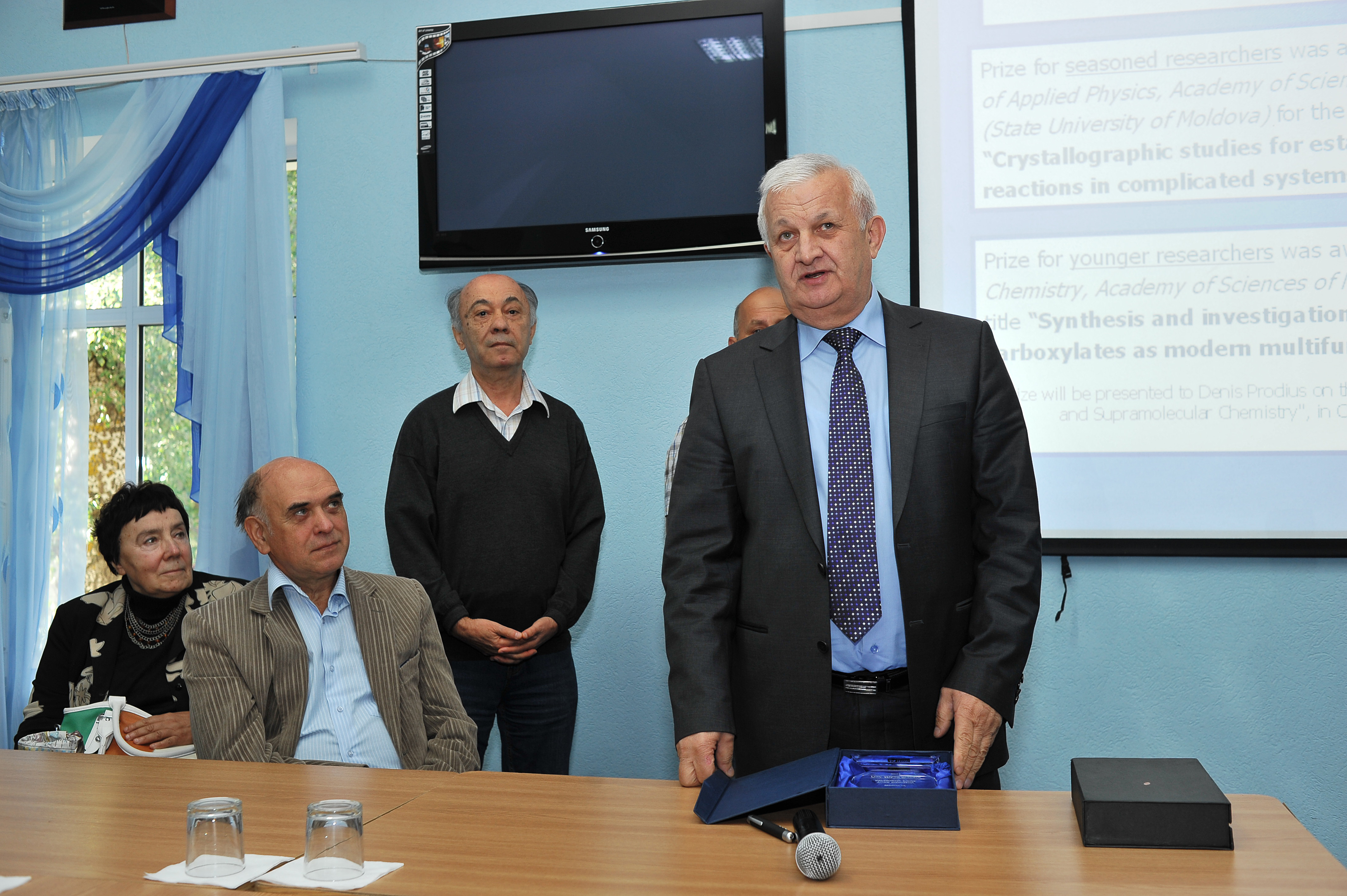 Prof. Revenco receiving 2012 Prize
Prof. Revenco receiving 2012 Prize
Dr. Prodius receiving 2012 Prize
Those interested in applying should read to TO APPLY. If there are questions, see CONTACTS.
Those interested in supporting this effort to encourage young people in public service, please see TO DONATE. We are proud that every dollar contributed goes directly to prizes, none to overhead or any other administrative expense. When you donate to us, you KNOW where your money goes.